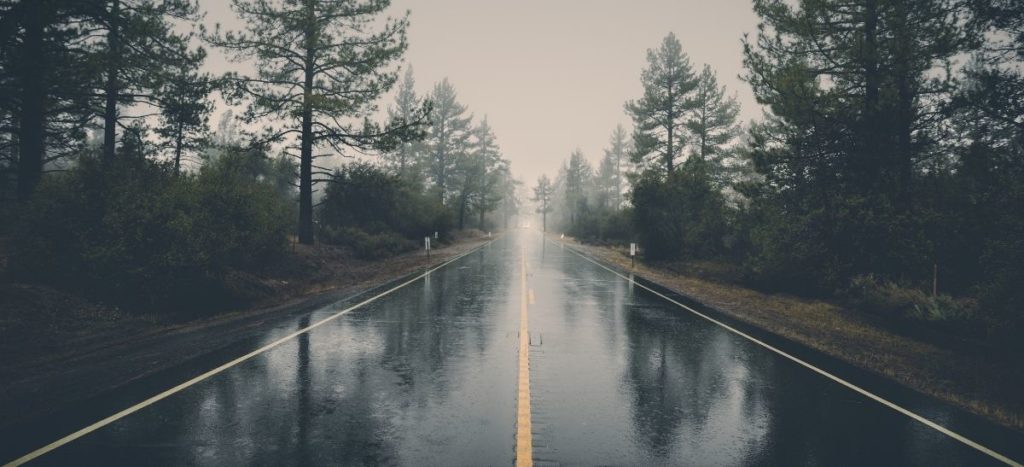Please welcome Alex Johnston, a devoted volunteer of Sustainable Hamilton Burlington and Sustainability Leadership, who is our guest blogger for this month’s post.
I’ve lived in Ontario for my whole life. Living in the urbanized “Golden Horseshoe,” I’ve always treasured time outside the cities. Between family visits, school trips, and summer camps (first for me and then for my daughter), I’ve seen a lot of the province and have many happy memories of rolling down narrow highways bounded on either side by thick forest. When I was a kid, I imagined the trees had been there since the dawn of time and just went on forever — primeval wilderness just a few steps from the asphalt.
When I learned to read maps, I was disappointed but also fascinated to learn that beyond those trees were other highways, other cities, and other dreaming kids. I was equally surprised when, just a few years ago, I learned that most of those woods were probably not nearly as old as I’d thought. It changed my perspective on this province, our history and most importantly, what is possible in the face of encroaching climate change. In fact, it was so important to me that I’d like to tell you about what I learned and why I think you should care too.
It starts with a picture: a young man reclines against a tree stump. What’s odd is that the young man and the tree stump are both about five feet in the air — the original soil has been scoured away leaving the roots exposed, holding the stump aloft. This photo is actually part of a collection. Another photo shows a field of trees like this, the soil reduced to windswept sand and eroded away except for scattered clumps. There are images of neighbourhoods submerged in flash floods. One photo shows loose sand slowly piling up against an abandoned farmhouse, soon to bury it.

By now readers will recognize the signs of advanced deforestation: denuded landscape; loose soil subject to drifting; the ground unable to absorb stormwater leading to flash floods; the reduction in windbreaks that leads to more and more furious wind storms; soil so dry that what organic matter remains is in danger from voracious wildfires — only too familiar from recent news cycles.
But the thing that shocked me about these pictures was not just the barren landscape, but where and when the photos were taken. The photo of the man on the stump is in a grainy, low contrast black and white, characteristic of photos from over 100 years ago. The field of stumps bears the note “Norfolk 1908.” These are not terrifying spectres of what might be, nor news of what is happening in some other, distant country. These photos are from our past — from Ontario a hundred years ago. The photos are part of a collection of images taken by a remarkable man named Edmund Zavitz.
Mark and Ben Cullen discuss Zavitz’ work:
In the early days of his work, Zavitz photographed the results of the denudation of the land. Blow sand in Norfolk County and on the Oak Ridges Moraine provided evidence that the absence of giant white and red pines, sycamores, and dense hardwood bush often created desert-like conditions. The prevailing westerly winds exposed the deep roots of the old tree stumps and left them standing like skeletons in the sand with their roots exposed two metres tall. (…) In one photo, a church stands with its foundation exposed and an adjacent graveyard on a hillside clings to razor-thin topsoil, with tumbled-down headstones and caskets all but exposed. (Toronto Star, Fri., Nov. 2, 2012)
How this happened is not hard to understand: during the waves of European settlement of Ontario in the 18th and 19th centuries, settlers chose to “clear” the land in order to demonstrate their stewardship and make their claim. The economically valuable woods (especially those giant virgin white pines) would be sold wherever possible, and the rest would simply be burnt off — with sometimes disastrous results. The 1916 Matheson Fire, the result of “slash and burn” agriculture, created a firestorm that devastated 2,000 square kilometers.
Stories of desertification, erosion, and its attendant disasters, appear in the lore of communities throughout Ontario. And yet I grew up in an Ontario that was covered in trees. So what happened?
Well, in no small part, Edmund Zavitz is what happened. Zavitz graduated from McMaster University in 1903 (though it was in Toronto at the time) and by 1908 he was teaching at the Ontario Agricultural College in Guelph. Having assembled a folio of images documenting the loss of forest cover and the resulting destruction, Zavitz began advocating an unprecedented and ambitious reforestation effort.
Over time he would become Ontario’s first provincial forester, and eventually the Chief of Reforestation for the province. In that time he would articulate a plan to rebuild the forest cover over thirty percent of the land mass in southern Ontario. Shortly before he died in 1968, the billionth tree was planted through his programs, and at least a billion more would follow. He was hailed as “the father of reforestation” and his programs were studied by foresters and conservation advocates around the world. The floods subsided and the fires were controlled. The fish returned to the rivers, the birds to the trees, and the animals to the woodlots.
While Zavitz’s program was done through his ministerial post, he kept the program alive and in motion by crossing political lines between parties including the early Farmers Union Party, the Progressive Conservatives, and the Liberals — so it was not the program of any one single government administration. He also worked with farmers and citizens to identify and purchase “waste” land that could be reforested, creating a true public/private partnership.
Take a moment to think about that. How many concrete examples do we have of large scale successful partnerships between businesses, government, and citizenry fighting climate change across entire regions?
While the runaway effect of greenhouse gases in the atmosphere is a different challenge than those of a hundred years ago, deforestation was still a human-made shift in weather, ecology, biodiversity, hydrology, and environment: it was, in any analysis, catastrophic climate change.
I know that for myself, and now for my daughter, learning about environmentalism has meant learning a lot about problems and very little about solutions — and both her generation and mine have struggled with defeatism. And I see evidence of that defeatism in the cynicism of politicians, in the numbness of the electorate and consumers in the face of the enormous problem. Without any tangible examples of success, it feels almost impossible…
…and yet in Ontario, even though most of us never realize it, there is a tangible example of the possibility of fighting climate change — and it’s all around us.
I believe we need to share this story and to celebrate it more than we do. We need to tell the doubters, the cynics and the hopeless that we live our lives surrounded by a reminder that climate change is possible here (not only can it happen here, it already has!) but also that with some leadership, some cooperation, and some political will, it is possible to fight and succeed against it.


